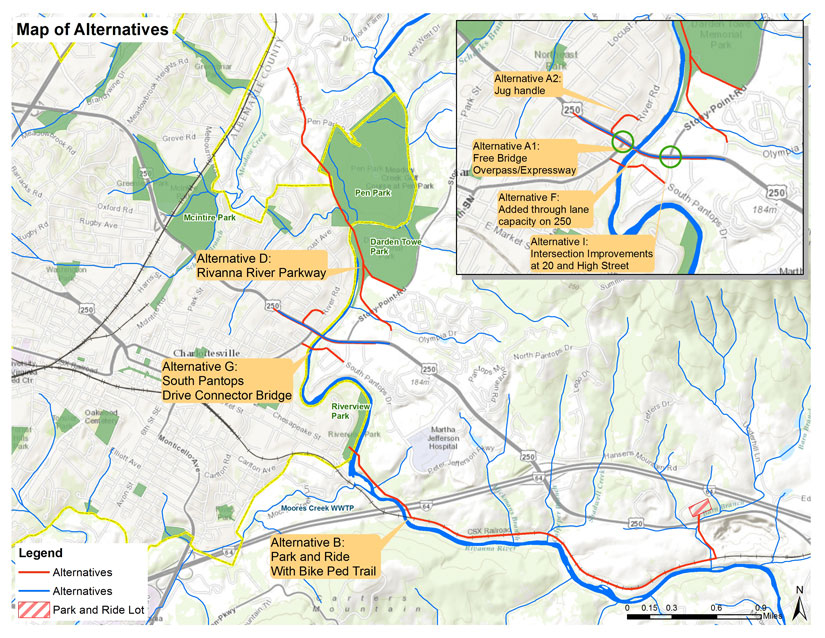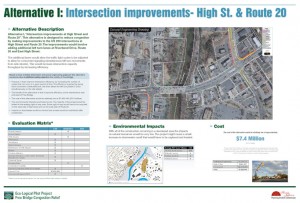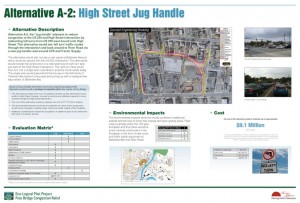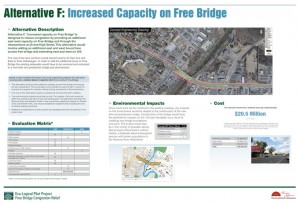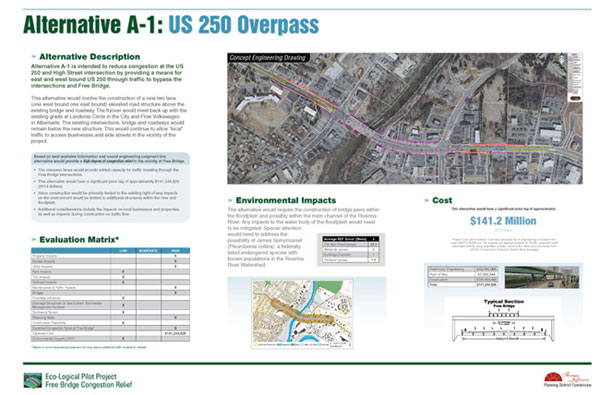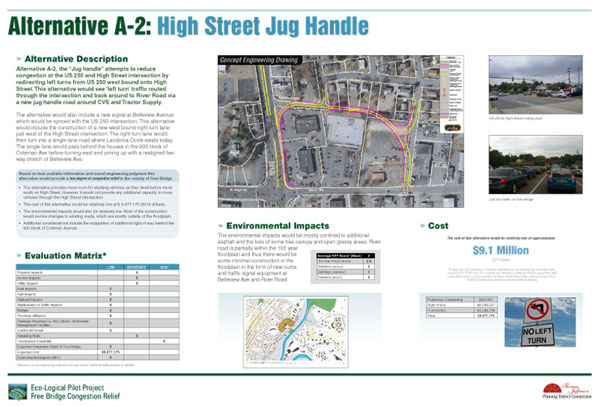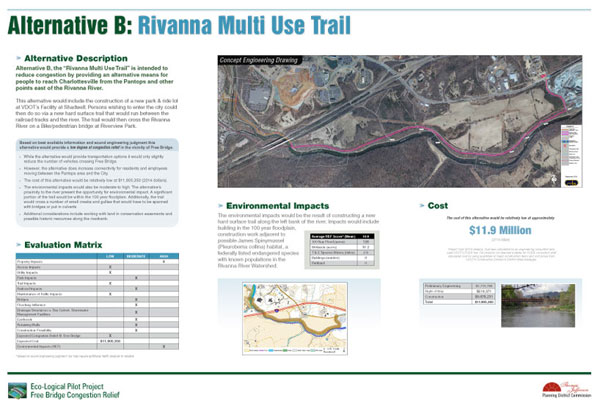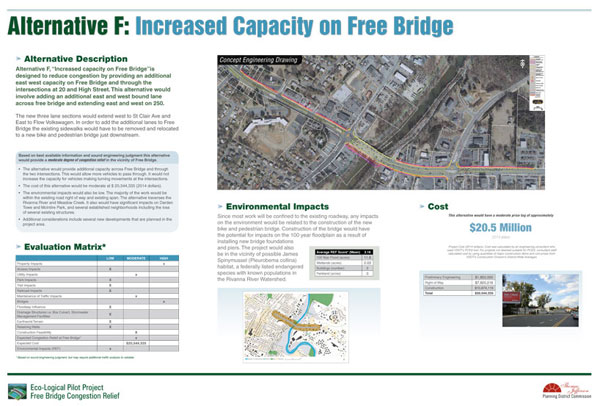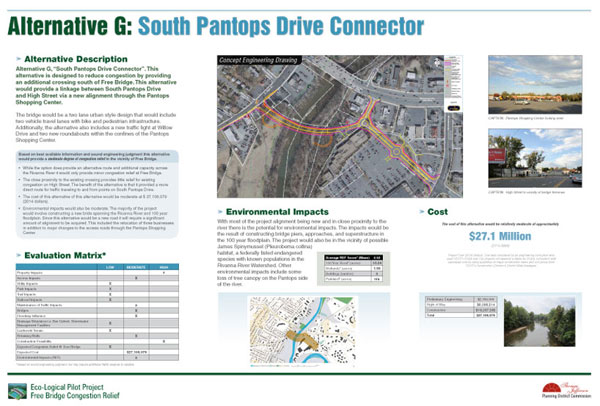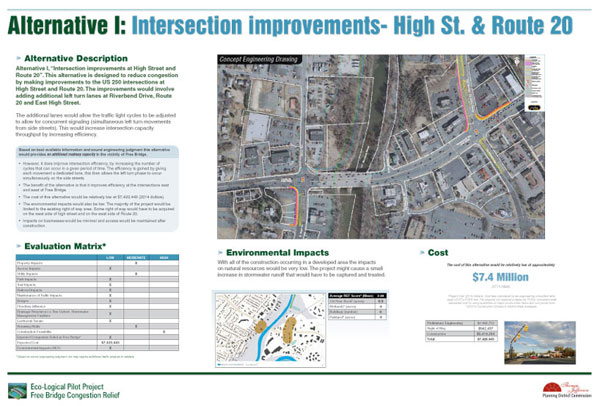Eco-Logical Pilot Project: Free Bridge Congestion Relief

The project was made possible by a grant from the Federal Highways Administration, who selected the Charlottesville MPO to be a pilot community for testing the Eco-Logical approach to transportation planning. The Eco-logical Approach, is a new and innovative approach to transportation planning that encourages a holistic approach to developing infrastructure projects. The MPO’s implementation of this approach focused on how the process and tools could work on a local level.
A key component of the project was the development of a stakeholder group. The stakeholder group made up of elected officials, staff from local governments, citizens, business owners and residents. The group was charged with helping MPO staff identify transportation solutions and discuss each alternatives possible impacts and needed mitigations. The stakeholder group met seven times over the course of the project and develop a set of seven transportation alternatives. The stakeholder identified alternatives were then analyzed by staff and an engineering consultant to determine each projects cost, feasibility, environmental impact and mitigation. Throughout the process, the Committee was given the ability to remove projects and or provide detailed input. To accomplish this level of dialog the MPO worked with UVA’s Institute for Environmental Negation, who provide meeting facilitation and mediation services at all stakeholder and public meetings.
Statement of Problem
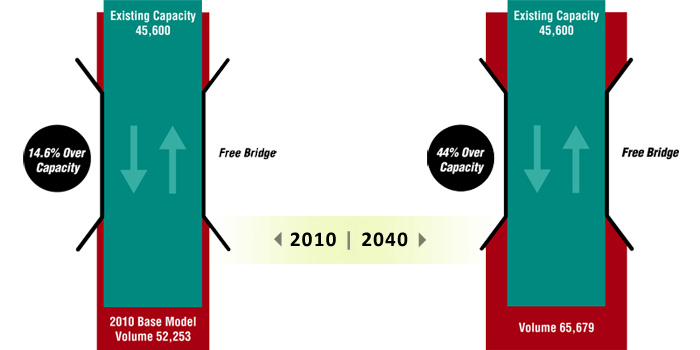
Documents
The following documents were produced as part of the Eco-Logical Pilot Project and each address a specific component of the project. Click the titles below to expand.

